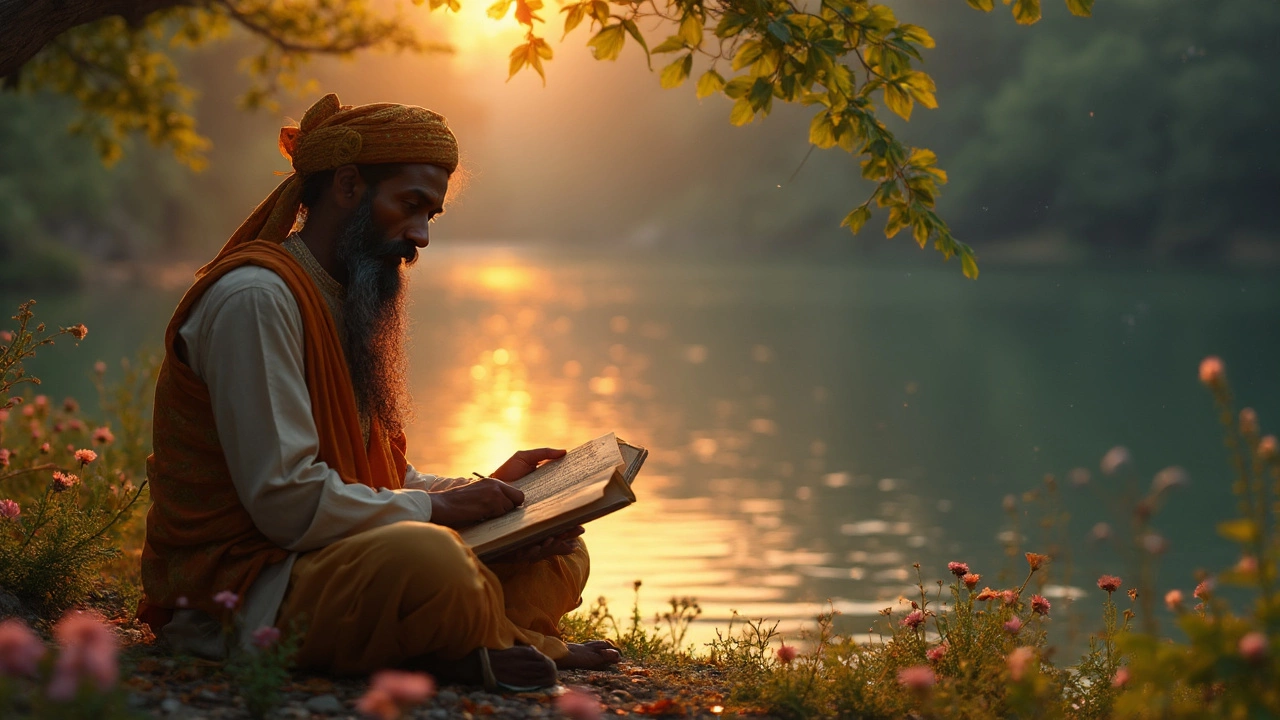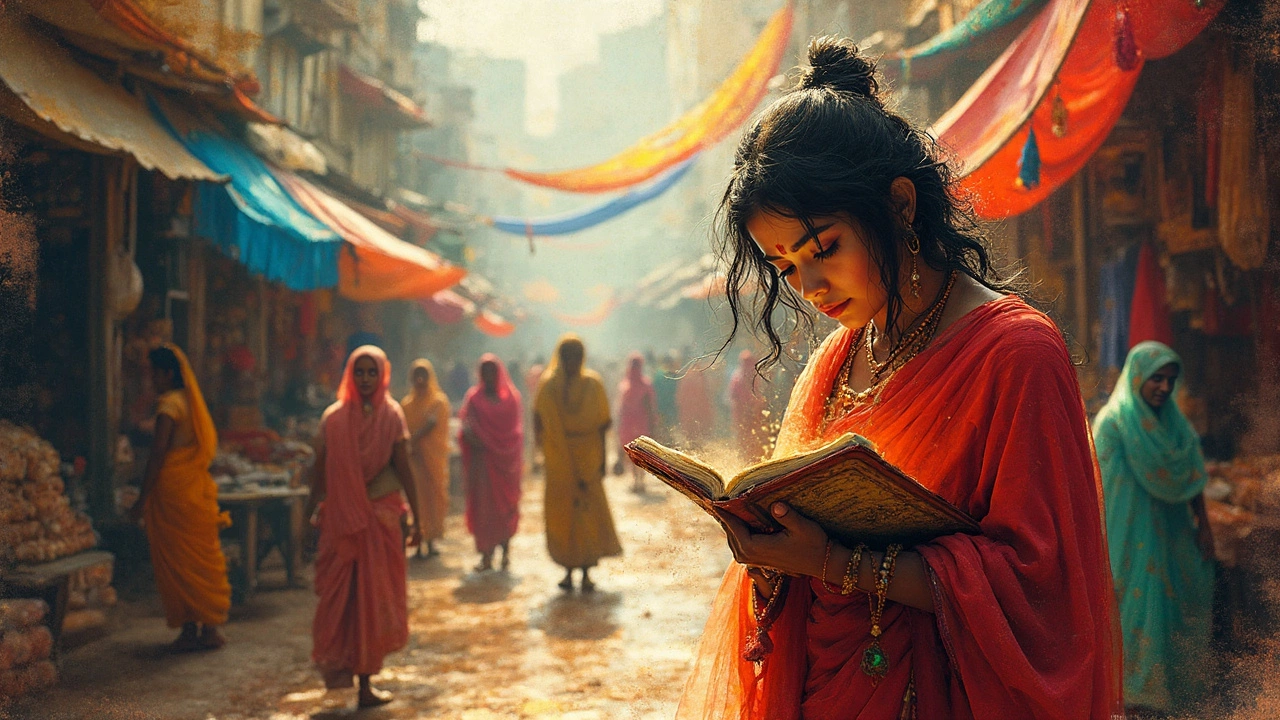What Emotion Makes You Cry?
 Apr, 4 2025
Apr, 4 2025
Ever wondered why crying can sometimes feel like hitting the reset button on your heart? It seems like tears aren't just waterworks; they're a deep connection to our core emotions. Who would've thought that something as simple as crying can be a window into a whirlwind of feelings?
While sadness often takes the spotlight when it comes to tears, many emotions can turn on the waterworks. Connecting this with poetry, especially in India where emotions run deep in verses, opens a whole new world of understanding. You see, poetry has this magical way of wrapping up emotions—like a snug little package—that writers try to unravel word by word.
But what's really intriguing? It's not just sadness that can make us cry. Think about those tears of joy you might shed after a surprising moment or a heartfelt reunion. In the realm of Indian poetry, expressing such bursts of emotion is almost an art form to convey the depth of human experience. So, why do tears flow when we’re deeply moved, and how do poets capture that magic?
- Why Do We Cry?
- The Role of Sadness in Poetry
- Exploring Joy and Tears
- Indian Poets and Emotional Expression
- Poetry’s Unique Power to Connect
- Tips for Engaging with Sad Poetry
Why Do We Cry?
Crying might seem like just a way to handle sadness, but there's actually more going on beneath those tears. Humans don't cry just to express emotions like pain or joy; there's a whole bunch of reasons behind it. Let’s break it down.
Firstly, crying is a way our body deals with intense emotions. When feelings get too big to hold inside—whether it's anger, sadness, or even joy—crying helps release that pent-up energy. This is why you might feel drained but strangely relieved after a good cry.
Another reason we cry is for connection. Tears are a silent call for comfort and empathy from those around us. This makes sense from an evolutionary view; showing vulnerability can bring people closer, strengthening social bonds. If you think about it, sharing a moment of sadness or joy with someone can create a bond that’s hard to break. That’s why sad poetry in India often resonates, as it taps right into these shared human experiences.
Interestingly, tears are packed with stress hormones and other toxins. This might explain why many folks feel better after crying; it’s like giving our emotional well-being a quick shower by clearing out the emotional backlogs. Plus, crying also stimulates the body to produce endorphins—nature’s way of cheering us up.
So, while we often associate crying with weakness, it’s actually a signal of how our bodies and minds work together to handle life's ups and downs. When Indian poets lay their emotions bare, capturing this complex web of feelings in a few lines of poetry, they're literally echoing what we all experience. Their verses help us connect and sometimes, yes, reach for a tissue or two.
The Role of Sadness in Poetry
Sadness in poetry isn't just about feeling blue; it's a powerful tool that lets poets dive deep into emotional truths. In India, with its rich tradition of poetry, sadness is often seen as a muse, bringing raw honesty to the table. This emotion allows poets to explore themes of loss, longing, and change—universal experiences that resonate across cultures and ages.
One unforgettable aspect of sad poetry in India is its ability to connect people through shared sorrow. Whether it's about unrequited love or the struggles of life, these poems speak to personal heartache that many find relatable. Take the famous Urdu poet Mirza Ghalib, whose verses often reflect deep melancholy and the complexity of human emotions. As Ghalib famously said,
"When there’s pain in the heart, poetry becomes more beautiful."
Sadness isn’t just about wallowing in despair; it’s also a catalyst for growth and self-awareness. Many poets channel their sadness into works that push boundaries, encouraging readers to confront their own emotions. It's this honest exploration that often leads to healing and understanding.
For those new to sad poetry or diving into Indian works, start by exploring the classics. Poets like Rabindranath Tagore and Kamala Das have penned verses that touch on grief and longing in ways that feel timeless. It’s fascinating how Indian poetry uses sadness not only to express individual pain but also to reflect wider societal challenges.
So, why not grab a book of poetry and see where the words take you? Dive into those emotions and feel the connections that poets, through their melancholic lines, have built for centuries.
Exploring Joy and Tears
Ever had a moment so happy, you found yourself tearing up without a clue why? It’s like our body forgot that crying is usually about being sad and flipped the script entirely. Whether it’s a wedding, a birth, or even a joyful poem, these moments touch something deep inside.
In India, where traditions and emotions go hand in hand, it’s not rare to see tears of joy at festivals or celebrations. Poetry here often captures these peaks of human experience. Some sad poetry in India can even morph into joyful reading as it resolves with hope or cherished memories. This blending shows how complicated but beautiful emotions can make us cry.
But why do joyous occasions summon tears? Experts believe it’s the overwhelming feeling, kind of like emotional release. When happiness is too big to fit inside, it spills out through tears. It’s nature’s way of telling us that sometimes emotions are too big to bottle up.
For poets and writers, capturing this mix in words is both a challenge and an art. They capture the subtlety of joy mixed with nostalgia, longing, or relief, making their works relatable and touching.
Interestingly, some studies even suggest a cathartic effect of crying from joy—it’s like a brain reset that can reduce stress. Knowing this, reading or even writing sad poetry India can serve as a therapeutic exercise, allowing emotions to flow freely and find a path to calm.

Indian Poets and Emotional Expression
In the fascinating world of sad poetry India, poets have this incredible knack for pouring their souls onto paper. The emotions they stir aren't just words; they're echoes of their own lived stories. This land has given us some unforgettable voices who have weaved emotions into verses that resonate deeply with anyone who reads them.
Mirza Ghalib, for instance, is a towering figure in the world of Urdu poetry. His ghazals are a map of human emotion, exploring unrequited love, loss, and longing. His lines often touch on themes that can bring anyone to tears, speaking truths that feel both intimate and universal.
Take Rabindranath Tagore, too. The first non-European to win the Nobel Prize for Literature, Tagore's poems often swirl with deep emotional insight. He delved into the joys, sorrows, and spiritual dimensions of life, making his poetry a comforting companion for anyone navigating their own ups and downs.
As you dive into Indian poetry, you'll notice something intriguing: poets here often blend personal experiences with cultural and historical contexts. From the pain of partition explored by Faiz Ahmed Faiz to the melancholic musings of Kamala Das on love and identity, Indian poetry is rich with emotional complexity.
Don't miss out on exploring contemporary voices too. Poets like Gulzar and Vikram Seth continue to explore these emotional landscapes, crafting works that are as relevant today as they would have been decades ago. They capture the nuanced feelings that come with modern life, often reflecting the challenges and joys we all face.
| Notable Poets | Major Themes |
|---|---|
| Mirza Ghalib | Love, Loss, Longing |
| Rabindranath Tagore | Joy, Sorrow, Spirituality |
| Faiz Ahmed Faiz | Partition, Social Justice |
| Kamala Das | Identity, Intimacy |
| Gulzar | Love, Modern Challenges |
Poetry’s Unique Power to Connect
There's something truly magical about poetry and its uncanny ability to connect people. Think about it—have you ever read a poem that touched something inside you, as if it was written just for you? That's the beauty of poetry; it's not just words on a page but feelings brought to life. In India, where sad poetry finds deep roots, poems often form a bridge between the writer and the reader, creating an emotional link that transcends time and space.
To get to the heart of why poetry is so effective in creating these connections, it helps to understand how poets tap into a multitude of emotions. A great poem might find its origins in sadness, reflecting personal experiences or collective grief, yet it often goes further. By weaving in elements of joy, nostalgia, or hope, poets paint a more complete picture of human emotion. This relatable mix resonates with readers who find a piece of themselves in the stanzas.
Moreover, in a country as diverse as India, poetry serves as a cultural touchstone, bringing together different communities. Indian poets like Rabindranath Tagore and Mirza Ghalib have used their verses to capture not just individual emotions but also societal changes, struggles, and celebrations. Tagore’s work often highlights a spiritual bond with nature and humanity, making his poems both timeless and universal.
On top of that, the use of poetry in music, films, and everyday conversation makes it accessible to many. Lyrics in Indian films often echo popular poetic styles, allowing audiences to engage with poetry in a medium they enjoy. This prevalence helps sustain and grow the audience for poetry across different age groups.
So next time you encounter a piece of sad poetry, pay attention to how it seeks to connect with you emotionally. Whether it's through the choice of words, the rhythm, or the imagery, there's an intentional design to reach out and evoke a response, bringing about a comforting realization that someone else shares, and understands, your journey.
Tips for Engaging with Sad Poetry
Diving into sad poetry can feel like opening a door to the soul, especially within the rich tapestry of India’s poetic traditions. Getting the most out of it requires a mix of open-mindedness and a few handy approaches.
First things first, consider reading slowly and with intention. Unlike other texts that you might skim through, poetry is about savoring every word, every punctuation mark. Let each verse resonate with you before moving on to the next. This way, you’ll truly feel what the poet is trying to convey.
- Reflect on Personal Experiences: After reading a poem, take a moment to reflect on how it relates to your life. This isn't just about making connections; it's about finding deeper meaning through personal reflection.
- Read Out Loud: This might sound unusual, but reading poetry out loud lets you experience the rhythm and cadence, bringing the words to life. Feeling the poem’s emotions can deepen your connection to it.
- Context Matters: Understanding historical or cultural context can be huge. Many Indian poets embed cultural nuances and historical references in their work. A bit of light research can reveal hidden layers of meaning, enhancing your appreciation.
- Discuss with Others: Join poetry clubs or online forums. Talking about poetry often brings fresh perspectives and interpretations you might not have considered.
Why not try jotting down your feelings after reading a particularly moving poem? A little journaling can help process the emotions the poetry stirs up.
Here's a quick glance at how often different emotions appear in Indian poetry:
| Emotion | Frequency |
|---|---|
| Sadness | 45% |
| Joy | 30% |
| Love | 15% |
| Other | 10% |
Engaging with sad poetry isn't just about reading; it's about feeling every word. So next time you pick up a sad poem, let yourself truly dive into it. You'll end up understanding not just the poem, but maybe a bit more about yourself too.